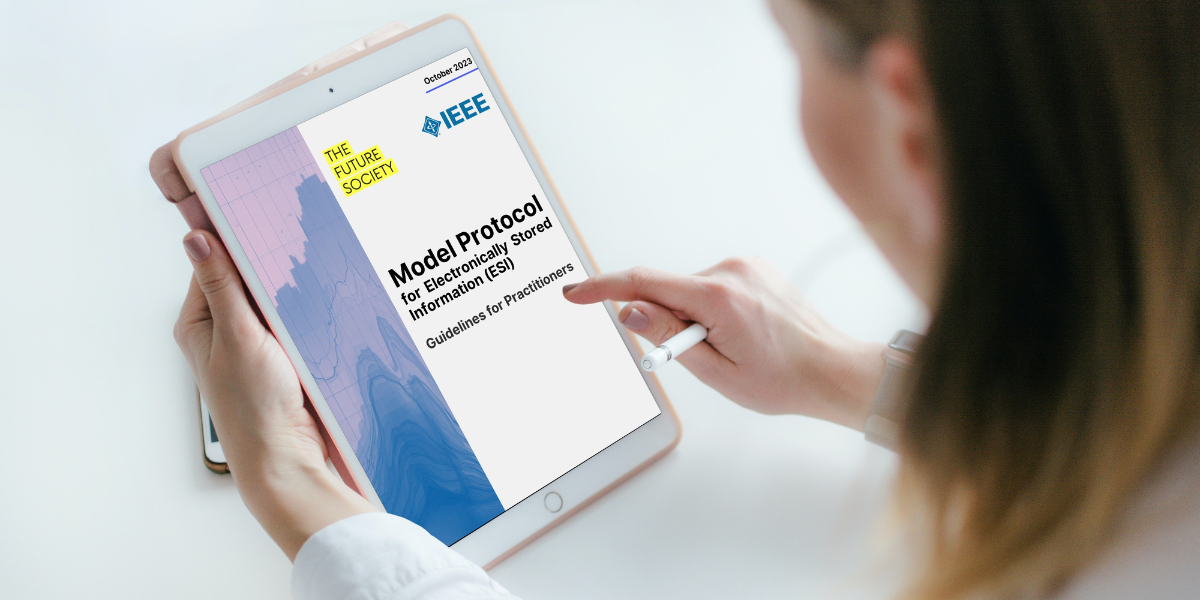The Future Society, an independent nonprofit organization based in the U.S. and Europe, together with IEEE, has developed and launched this week their Model Protocol for Electronically Stored Information (ESI).
Many months in the making, with several rounds of review from some of the brightest and most thoughtful experts in the industry, the aim of this protocol and the adjacent guidelines for practitioners is to ”assist parties seeking to establish the trustworthiness of advanced tools used to review electronically stored information (ESI) in legal discovery,” according to their website.

The model protocol consists of two documents: The Protocol and Commentary and the Guidelines for Practitioners. The former is an actual draft ESI protocol that may be used by legal and e-discovery practitioners. The commentary that accompanies the protocol identifies practices and procedures for executing the protocol and specifically for validating a document review effort.
In the introduction to the model protocol, the authors write that “[t]he goal of this model protocol (together with the companion commentary and practitioners’ guidelines) is to remove, or at least lower, the obstacles in the way of the effective use of TAR in legal discovery, thereby realizing the technology’s potential to find the facts that matter in a lawsuit or investigation more efficiently and effectively.”
There is also a great, candid foreword by John M. Facciola, the well-known retired U.S. Magistrate Judge, that really reminds those who toil in e-discovery of the underlying purpose of discovery, and which concludes with this nugget of truth:
“The IEEE has provided lawyers and judges with a remarkably beneficial solution to the problem of the use of machine learning in discovery. Now, we get to use it and test it in the best possible way. We have to hope that it will thereby reduce costs and increase efficiency thereby increasing the access to justice, which should be the goal of all technical innovation that is designed to assist lawyers and judges.”
The Guidelines for Practitioners, on the other hand, is a companion document to the protocol that takes a deeper dive into understanding the concepts and methodologies underlying the approach to validating a review effort. It is intended for advanced practitioners and e-discovery practitioners. It provides additional guidance on sampling and measuring outcomes and a glossary of terms. The guidelines serve as an in-depth resource for practitioners seeking a more thorough grounding in approaches to validating the review effort outlined in the Protocol.
Driven largely by industry veteran Dr. Bruce Hedin, a researcher, consultant, and data scientist, the development of the Protocol, Commentary, and Guidelines began in 2020 and picked up steam again in 2022. Throughout 2023, a review team (full disclosure: I was among the review team) read and commented on the documents).
Asked for comment on the publication of the model protocol, Dr. Hedin remarked earlier this week that “It was our intention to produce a set of materials that would serve both as an actionable protocol and as a valuable educational resource.” He added, “if they meet that objective, I believe that they will help to resolve many of the issues that currently impede the efficient and effective use of technology in legal discovery.”
As an educational organization, ACEDS is proud to contribute to efforts like this that advance the cause of technology competence and provide valuable information to our members and the legal community as a whole.



